Poverty isn’t just about money; it’s also about feeling isolated and lacking the support to succeed. In this post, we delve into the concept of overcoming poverty by highlighting that it encompasses more than financial scarcity—it involves feeling isolated and lacking the necessary support to thrive.
We examine how fostering meaningful relationships can effectively break the cycle of poverty. Poverty is not only a lack of financial resources but also isolation from people who can help one succeed .
The story starts with . . .
Maria grew up in poverty and always dreamed of a better life as a young girl. Despite her hard work and dedication to school, she could not overcome the cycle of poverty that enveloped her.
One day, Maria heard about a community program that was designed to help young people like her overcome poverty by building meaningful relationships.
Maria felt welcomed by both the staff and participants after making the decision to join the program. Over the next few months, she attended regular meetings and events and slowly began to form connections with the other participants.
Through these relationships, Maria gained a sense of belonging and support that she had never experienced before. She learned new skills, received encouragement, and even found job opportunities through her new network of friends.
What is poverty?
Poverty is a complicated thing. This occurs when individuals or groups lack the necessary resources to fulfill their fundamental requirements and lead a satisfactory existence. This means they lack money, possessions, and access to things like education, healthcare, clean water, and good housing.
Poverty can show up in different ways. Extreme poverty is when people can’t even meet their most basic needs for survival. Relative poverty is when individuals have lot fewer resources and chances compared to others in society.
Poverty isn’t just about not having enough stuff. It’s way bigger than that. It includes being left out socially, not being able to get a good education or healthcare, being at risk when bad things happen, and not having many chances to move up in life.
It’s a complicated problem affected by lots of things like money, society, politics, and the environment.
Sure, here we’re only talking about how we communicate and interact socially. When we don’t have good communication, the chances we notice around us are pretty lousy, and people often can’t take advantage of them.
That’s why living in a society where everyone gets along and communication is meaningful is super important.
What is absolute poverty?
Absolute poverty refers to the severe lack of fundamental needs necessary for survival and a decent quality of life, including food, clean water, shelter, and healthcare, experienced by individuals or families. It’s a way to measure how poor someone is, based on a minimum standard of living.
Big organizations like the World Bank use a poverty line that’s set at $1.90 per day. If someone’s income is below that, they’re considered extremely poor. But remember, different countries and organizations might have their own poverty lines depending on their situation.
Absolute poverty example
Imagine a village in a poor country where families live in shabby shelters made from scrap stuff. They don’t have electricity or clean water. The people struggle to find enough food and often get sick from not eating well. There’s no basic healthcare, and diseases spread easily.
The kids can’t go to school because there’s not enough money, so their future doesn’t look good. This community is stuck in a never-ending poverty cycle with no way out.
This example shows how tough it is for people living in extreme poverty. They don’t even have the bare essentials for a decent and stable life.
Absolute poverty Vs. Relative poverty
Absolute poverty and relative poverty are two different ways to measure and understand poverty. They give us different viewpoints on how severe and widespread poverty is in a society.
Relative poverty, rather than absolute poverty, compares people to the rest of society to measure poverty. It looks at how much money people have compared to the overall income distribution.
It’s concerned with inequality and identifies individuals or households with much lower incomes than the average or median. Poverty is often defined in relation to others, either by comparing one’s income to the median income or by assessing living standards compared to the rest of the population.
The distinction between absolute and relative poverty lies in their definitions and methods of measuring poverty. Absolute poverty focuses on meeting basic needs, while relative poverty considers how people fare economically compared to others.
Both concepts are important for understanding poverty and shaping policies because they offer different perspectives on how deep, severe, and widespread poverty is in a specific situation.
Why am I poor?
People may face financial difficulties or feel financially insecure due to a variety of reasons. It’s important to remember that everyone’s situation is different. Managing can be challenging due to these common factors:
- Not getting a good education or learning useful skills can make it tough to find a good job and make enough money.
- Having trouble finding work or being stuck in a job that doesn’t pay well can strain your finances.
- Not knowing much about money and how to handle it, like budgeting and saving, can make it tough to manage your money well.
- Big economic issues, when the economy is bad, or there’s a lot of inequality, can make it hard for lots of people to do well financially.
Of course, we’ve talked about how all these problems can be fixed by talking and connecting with others. But for people who don’t know how to begin, it can be super overwhelming to build those deep and meaningful relationships.
How to solve poverty? In the whole picture.
Solving poverty is a big challenge, and no simple solution exists. However, there are a few actions we can take:
- Create more jobs and help the economy grow. This means investing in things like education, healthcare, and businesses to create more opportunities for people to work.
- Make sure everyone has access to a good education and training. Education helps people get better jobs, so we should invest in schools and programs that teach valuable skills.
- Have safety nets in place to help people who are struggling. This could include giving money or food to those in need, helping with healthcare costs, and ensuring affordable homes are available.
- Support women and ensure they have the same opportunities as men. When women are empowered, it helps families and communities. We can do this by giving girls equal access to education and jobs and fighting against discrimination.
- Make sure everyone can get healthcare when they need it. Access to affordable healthcare is essential in breaking the cycle of poverty, as medical expenses can be a significant burden. Therefore, healthcare must be accessible to all.
- Help farmers by promoting sustainable farming methods and helping them sell their crops. Agriculture is an important way for many people to make a living, so we should support farmers and help them be more successful.
- Make accessing financial services like bank accounts, loans, and insurance easier. Access to these services can help people save money, invest in their future, and protect themselves from unexpected events.
- Address more significant problems like corruption and inequality. These things can keep people in poverty, so we must fight against corruption and ensure everyone has a fair chance to succeed.
- Work together with other countries and organizations to fight poverty. We can learn and enormously impact by sharing our ideas and resources.
Remember adapting these ideas to fit each situation is essential. There’s no one-size-fits-all approach, but we can progress in reducing poverty by taking these steps.
Overcoming poverty is a complex and challenging process, but there are several tools and strategies that can make a real difference. Let’s dive into seven effective tools that can help lift individuals and communities out of poverty.
1. Education
Education is a game-changer. It equips people with the knowledge and skills they need to improve their lives. Whether it’s basic literacy or advanced technical skills, education opens doors to better job opportunities and a brighter future.
Investing in education for all, especially for girls and marginalized groups, can have a transformative impact on communities.
2. Employment and Livelihood Programs
Creating job opportunities and supporting small businesses is crucial. Programs that provide vocational training, micro-loans, and entrepreneurship support help people start and sustain their own businesses.
When people have stable and well-paying jobs, they can support themselves and their families, breaking the cycle of poverty.
3. Access to Healthcare
Health and poverty are deeply interconnected. Poor health can prevent people from working and lead to increased medical expenses, pushing families deeper into poverty. Ensuring access to affordable healthcare services, preventive care, and proper nutrition is essential for people to lead productive lives.
4. Social Protection Programs
Safety nets like unemployment benefits, food assistance, and housing support can prevent vulnerable individuals and families from falling into extreme poverty.
These programs provide temporary relief and stability, allowing people to focus on improving their situation without the constant stress of meeting basic needs.
5. Financial Inclusion
Access to financial services like banking, savings accounts, and credit is vital. When people can save money, access credit, and manage their finances, they can invest in education, health, and business opportunities.
Financial literacy programs also play a significant role in helping people make informed financial decisions.
6. Infrastructure Development
Investing in infrastructure such as roads, electricity, clean water, and internet connectivity is essential for economic development. Good infrastructure improves access to markets, education, and healthcare, and enables businesses to thrive.
When communities are connected and have reliable services, they can better participate in the economy.
Empowering communities to take charge of their development is crucial. This involves supporting grassroots organizations, fostering leadership, and encouraging participation in decision-making processes.
When communities are involved in shaping their future, they are more likely to develop sustainable solutions that address their unique challenges.
Overall, overcoming poverty requires a multifaceted approach. By focusing on education, employment, healthcare, social protection, financial inclusion, infrastructure, and community empowerment, we can create a more equitable and prosperous world.
Each tool plays a vital role, and together, they can help lift people out of poverty and pave the way for lasting change.
How to get out of poverty by connecting with people?
Connecting with people can be a valuable asset in escaping poverty. Here are some ways to leverage your connections to improve your financial situation:
- Networking and Mentoring: Build connections with individuals who can provide guidance and support. Attend networking events, join professional or community organizations, and engage in online forums or social media groups related to your desired industry. Seek mentors who can offer advice, share their experiences, and provide growth opportunities.
- Access to Resources and Support: Research and connect with organizations that assist impoverished individuals. Look for programs that provide financial aid, job training, career counseling, or access to affordable housing. Individuals looking to escape poverty can find valuable resources and support from government agencies, non-profit organizations, and local community centers.
- Join Groups and Communities: Seek out groups or communities centered around your interests, hobbies, or professional aspirations. These include clubs, sports teams, volunteering organizations, online forums, and social media groups. Engaging with people who share your passions makes it easier to establish connections.
- Identify Role Models: Find individuals who have achieved your desired financial success and learn from their experiences. Study their journey, strategies, and mindset to gain inspiration and insights into how they broke free from poverty. Role models can serve as a source of motivation and provide a roadmap for your path to success.
- Collaborate on Opportunities: Explore collaboration opportunities with individuals in your network. Seek partnerships, joint ventures, or cooperative efforts where you can combine resources, skills, and ideas to create mutually beneficial opportunities. Collaborating with others can help you access new markets, expand your reach, and increase your chances of success.
- Volunteer and Give Back: Engaging in volunteer work or community service allows you to contribute positively and exposes you to a diverse group of people. Volunteering can help you widen your social circle, acquire new skills, and establish links with people or groups willing to support you in overcoming poverty.
Developing authentic connections with others should be a two-way street that benefits everyone involved. Be genuine, show interest in others, and be willing to offer your support and expertise.
Building solid connections takes time, effort, and nurturing, but the potential rewards for opportunities, support, and knowledge can significantly contribute to your journey out of poverty.
Programs that Foster Relationships for Overcoming Poverty: Successful Examples!
Here are some examples of successful programs that focus on building relationships to reduce poverty:
- Mid-South VISTA Project (MSVP): This program, based at Mid-South University, works to strengthen partnerships between the campus and community organizations. By joining forces with AmeriCorps VISTA, they enhance the capacity of non-profit organizations and promote community engagement .
- Conditional Cash Transfers (CCTs): Businesses can contribute to poverty alleviation and support the United Nations’ 2030 Agenda (SDGs) by participating in CCTs. A study identifies six ways in which businesses can get involved in different stages of CCT operations, ensuring their long-term sustainability and exploring new market opportunities .
- National Rural Livelihood Mission Scheme (formerly known as Swarnjayanti Gram Swarozgar Yojana Scheme): This scheme evaluates the impact of participants using the Multidimensional Poverty Index (MPI) across various dimensions of poverty. The findings indicate that participation in the scheme has improved living standards and reduced multidimensional poverty .
Conclusion
In conclusion, overcoming poverty is not just about money; it involves breaking the cycle of isolation and lack of support. Building meaningful relationships can be a powerful tool in this journey.
Maria’s story demonstrates how joining a community program and forming connections transformed her life, providing her with a sense of belonging, support, and access to opportunities.
Poverty encompasses more than material deprivation and includes social exclusion and limited access to education and healthcare. By fostering communication and meaningful interaction, we can address these challenges and create a society where everyone has a fair chance to succeed.
To comprehensively address poverty, we need to create more job opportunities, improve access to education and training, establish safety nets, promote gender equality, ensure access to healthcare, support sustainable farming, enhance access to financial services, tackle corruption and inequality, and collaborate with other countries and organizations.
These steps, tailored to each situation, contribute to reducing poverty and creating a more equitable society. Connecting with others is crucial in escaping poverty, and there are several effective ways to leverage relationships for financial improvement.
Networking, seeking mentorship, accessing resources and support, joining groups and communities, identifying role models, collaborating on opportunities, and engaging in volunteer work all play a significant role in the journey out of poverty.
Successful programs exist that focus on building relationships to overcome poverty. Examples include the Mid-South VISTA Project, Conditional Cash Transfers, and the National Rural Livelihood Mission Scheme.
These programs prioritize partnerships, community engagement, and addressing multidimensional poverty.
By recognizing that poverty extends beyond financial scarcity and prioritizing the development of meaningful relationships, we can make substantial progress in overcoming poverty and creating a more inclusive society where everyone has the opportunity to thrive.
Sources:
{11239602:ATCTITDD};{11239602:T9HF6DAI};{11239602:SPFSJB9X};{11239602:7VS2NLBS}
default
asc
no
25930
%7B%22status%22%3A%22success%22%2C%22updateneeded%22%3Afalse%2C%22instance%22%3A%22zotpress-b268381f76b6ce81b6c3153e0e996742%22%2C%22meta%22%3A%7B%22request_last%22%3A0%2C%22request_next%22%3A0%2C%22used_cache%22%3Atrue%7D%2C%22data%22%3A%5B%7B%22key%22%3A%227VS2NLBS%22%2C%22library%22%3A%7B%22id%22%3A11239602%7D%2C%22meta%22%3A%7B%22creatorSummary%22%3A%22Khaki%20and%20Sangmi%22%2C%22parsedDate%22%3A%222017-08-07%22%2C%22numChildren%22%3A0%7D%2C%22bib%22%3A%22%3Cdiv%20class%3D%5C%22csl-bib-body%5C%22%20style%3D%5C%22line-height%3A%201.35%3B%20%5C%22%3E%5Cn%20%20%3Cdiv%20class%3D%5C%22csl-entry%5C%22%20style%3D%5C%22clear%3A%20left%3B%20%5C%22%3E%5Cn%20%20%20%20%3Cdiv%20class%3D%5C%22csl-left-margin%5C%22%20style%3D%5C%22float%3A%20left%3B%20padding-right%3A%200.5em%3B%20text-align%3A%20right%3B%20width%3A%201em%3B%5C%22%3E%5B1%5D%3C%5C%2Fdiv%3E%3Cdiv%20class%3D%5C%22csl-right-inline%5C%22%20style%3D%5C%22margin%3A%200%20.4em%200%201.5em%3B%5C%22%3EKhaki%20AR%2C%20Sangmi%20M-D.%20Does%20access%20to%20finance%20alleviate%20poverty%3F%20A%20case%20study%20of%20SGSY%20beneficiaries%20in%20Kashmir%20Valley.%20IJSE%202017%3B44%3A1032%26%23x2013%3B45.%20%3Ca%20href%3D%27https%3A%5C%2F%5C%2Fdoi.org%5C%2F10.1108%5C%2FIJSE-10-2015-0277%27%3Ehttps%3A%5C%2F%5C%2Fdoi.org%5C%2F10.1108%5C%2FIJSE-10-2015-0277%3C%5C%2Fa%3E.%3C%5C%2Fdiv%3E%5Cn%20%20%3C%5C%2Fdiv%3E%5Cn%3C%5C%2Fdiv%3E%22%2C%22data%22%3A%7B%22itemType%22%3A%22journalArticle%22%2C%22title%22%3A%22Does%20access%20to%20finance%20alleviate%20poverty%3F%20A%20case%20study%20of%20SGSY%20beneficiaries%20in%20Kashmir%20Valley%22%2C%22creators%22%3A%5B%7B%22creatorType%22%3A%22author%22%2C%22firstName%22%3A%22Audil%20Rashid%22%2C%22lastName%22%3A%22Khaki%22%7D%2C%7B%22creatorType%22%3A%22author%22%2C%22firstName%22%3A%22Mohi-ud-Din%22%2C%22lastName%22%3A%22Sangmi%22%7D%5D%2C%22abstractNote%22%3A%22Purpose%20%5Cn%20%20%20%20%20%20%20%20%20%20%20%20%20%20The%20purpose%20of%20this%20paper%20is%20to%20question%20and%20analyse%20the%20basic%20tenets%20of%20financial%20inclusion%20and%20to%20understand%20the%20relationship%20between%20access%20to%20finance%20and%20poverty%20reduction.%20The%20paper%20attempts%20to%20elaborate%20the%20importance%20of%20unrestrained%20access%20to%20finance%20in%20building%20an%20inclusive%20financial%20sector%2C%20which%20is%20believed%20to%20reduce%20poverty%20by%20enabling%20poor%20and%20excluded%20people%20to%20participate%20in%20the%20economic%20process%20by%20employing%20their%20skill%20sets%2C%20labour%20and%20innovations%20in%20the%20productive%20activities%20of%20the%20economy%2C%20thereby%20not%20only%20increasing%20their%20own%20welfare%20and%20standards%20of%20living%20but%20also%20contributing%20at%20very%20high%20marginal%20returns%20to%20the%20overall%20economic%20growth.%20%5Cn%20%20%20%20%20%20%20%20%20%20%20%20%20%5Cn%20%20%20%20%20%20%20%20%20%20%20%20%20%5Cn%20%20%20%20%20%20%20%20%20%20%20%20%20%20Design%5C%2Fmethodology%5C%2Fapproach%20%5Cn%20%20%20%20%20%20%20%20%20%20%20%20%20%20This%20study%20evaluates%20the%20progression%20of%20the%20participants%5C%2Fbeneficiaries%20of%20National%20Rural%20Livelihood%20Mission%20Scheme%20%28erstwhile%20Swarnjayanti%20Gram%20Swarozgar%20Yojana%20Scheme%29%20across%20various%20dimensions%20of%20poverty%20by%20making%20use%20of%20the%20Multidimensional%20Poverty%20Index%20%28MPI%29.%20%5Cn%20%20%20%20%20%20%20%20%20%20%20%20%20%5Cn%20%20%20%20%20%20%20%20%20%20%20%20%20%5Cn%20%20%20%20%20%20%20%20%20%20%20%20%20%20Findings%20%5Cn%20%20%20%20%20%20%20%20%20%20%20%20%20%20The%20results%20suggest%20that%20the%20participation%20has%20in%20fact%20lead%20to%20increase%20in%20the%20standard%20of%20living%2C%20thereby%20reducing%20multidimensional%20poverty.%20Further%2C%20the%20results%20suggest%20that%20participation%20does%20not%20reduce%20deprivations%20in%20the%20%5Cu201ceducation%5Cu201d%20dimension%2C%20whereas%20in%20all%20other%20dimensions%20reduction%20in%20deprivations%20is%20significant.%20The%20results%20also%20suggest%20that%20the%20programme%20under%20study%20seems%20to%20be%20seriously%20mistargeting%20by%20allocating%20the%20programme%20to%20non-poor%20sections%20rather%20than%20absolute%20poor.%20%5Cn%20%20%20%20%20%20%20%20%20%20%20%20%20%5Cn%20%20%20%20%20%20%20%20%20%20%20%20%20%5Cn%20%20%20%20%20%20%20%20%20%20%20%20%20%20Research%20limitations%5C%2Fimplications%20%5Cn%20%20%20%20%20%20%20%20%20%20%20%20%20%20The%20study%20has%20been%20conducted%20without%20following%20the%20participants%20over%20a%20longer%20period%20of%20time.%20The%20study%20has%20adopted%20a%20pre-post%20methodology%2C%20collecting%20the%20responses%20at%20only%20one%20point%20using%20a%20reflexive%20quasi-experimental%20design%20which%20leads%20to%20a%20recall%20limitation.%20%5Cn%20%20%20%20%20%20%20%20%20%20%20%20%20%5Cn%20%20%20%20%20%20%20%20%20%20%20%20%20%5Cn%20%20%20%20%20%20%20%20%20%20%20%20%20%20Originality%5C%2Fvalue%20%5Cn%20%20%20%20%20%20%20%20%20%20%20%20%20%20The%20paper%20tries%20to%20evaluate%20the%20impact%20of%20access%20to%20financial%20inclusion%20through%20a%20new%20perspective%20%5Cu2013%20the%20MPI.%20The%20paper%20examines%20the%20targeting%20of%20government-sponsored%20programmes%20and%20the%20utility%20of%20such%20intervention%20in%20the%20changing%20milieu%20of%20financial%20services.%22%2C%22date%22%3A%222017-08-07%22%2C%22language%22%3A%22en%22%2C%22DOI%22%3A%2210.1108%5C%2FIJSE-10-2015-0277%22%2C%22ISSN%22%3A%220306-8293%22%2C%22url%22%3A%22https%3A%5C%2F%5C%2Fwww.emerald.com%5C%2Finsight%5C%2Fcontent%5C%2Fdoi%5C%2F10.1108%5C%2FIJSE-10-2015-0277%5C%2Ffull%5C%2Fhtml%22%2C%22collections%22%3A%5B%229FFPS293%22%5D%2C%22dateModified%22%3A%222023-07-18T16%3A44%3A40Z%22%7D%7D%2C%7B%22key%22%3A%22SPFSJB9X%22%2C%22library%22%3A%7B%22id%22%3A11239602%7D%2C%22meta%22%3A%7B%22creatorSummary%22%3A%22Ungson%20et%20al.%22%2C%22parsedDate%22%3A%222023-04-06%22%2C%22numChildren%22%3A0%7D%2C%22bib%22%3A%22%3Cdiv%20class%3D%5C%22csl-bib-body%5C%22%20style%3D%5C%22line-height%3A%201.35%3B%20%5C%22%3E%5Cn%20%20%3Cdiv%20class%3D%5C%22csl-entry%5C%22%20style%3D%5C%22clear%3A%20left%3B%20%5C%22%3E%5Cn%20%20%20%20%3Cdiv%20class%3D%5C%22csl-left-margin%5C%22%20style%3D%5C%22float%3A%20left%3B%20padding-right%3A%200.5em%3B%20text-align%3A%20right%3B%20width%3A%201em%3B%5C%22%3E%5B1%5D%3C%5C%2Fdiv%3E%3Cdiv%20class%3D%5C%22csl-right-inline%5C%22%20style%3D%5C%22margin%3A%200%20.4em%200%201.5em%3B%5C%22%3EUngson%20GR%2C%20Hudgens%20D%2C%20Gonzalez-Perez%20MA%2C%20Wong%20Y-Y%2C%20Wong%20SA%2C%20Monje-Cueto%20F%2C%20et%20al.%20The%20contribution%20of%20the%20private%20sector%20to%20poverty%20alleviation%20programs%3A%20exploring%20business%20engagement%20in%20conditional%20cash%20transfers.%20MRJIAM%202023%3B21%3A48%26%23x2013%3B75.%20%3Ca%20href%3D%27https%3A%5C%2F%5C%2Fdoi.org%5C%2F10.1108%5C%2FMRJIAM-08-2021-1222%27%3Ehttps%3A%5C%2F%5C%2Fdoi.org%5C%2F10.1108%5C%2FMRJIAM-08-2021-1222%3C%5C%2Fa%3E.%3C%5C%2Fdiv%3E%5Cn%20%20%3C%5C%2Fdiv%3E%5Cn%3C%5C%2Fdiv%3E%22%2C%22data%22%3A%7B%22itemType%22%3A%22journalArticle%22%2C%22title%22%3A%22The%20contribution%20of%20the%20private%20sector%20to%20poverty%20alleviation%20programs%3A%20exploring%20business%20engagement%20in%20conditional%20cash%20transfers%22%2C%22creators%22%3A%5B%7B%22creatorType%22%3A%22author%22%2C%22firstName%22%3A%22Gerardo%20Rivera%22%2C%22lastName%22%3A%22Ungson%22%7D%2C%7B%22creatorType%22%3A%22author%22%2C%22firstName%22%3A%22David%22%2C%22lastName%22%3A%22Hudgens%22%7D%2C%7B%22creatorType%22%3A%22author%22%2C%22firstName%22%3A%22Maria%20Alejandra%22%2C%22lastName%22%3A%22Gonzalez-Perez%22%7D%2C%7B%22creatorType%22%3A%22author%22%2C%22firstName%22%3A%22Yim-Yu%22%2C%22lastName%22%3A%22Wong%22%7D%2C%7B%22creatorType%22%3A%22author%22%2C%22firstName%22%3A%22Sara%20A.%22%2C%22lastName%22%3A%22Wong%22%7D%2C%7B%22creatorType%22%3A%22author%22%2C%22firstName%22%3A%22Fabiola%22%2C%22lastName%22%3A%22Monje-Cueto%22%7D%2C%7B%22creatorType%22%3A%22author%22%2C%22firstName%22%3A%22Armando%22%2C%22lastName%22%3A%22Borda%22%7D%2C%7B%22creatorType%22%3A%22author%22%2C%22firstName%22%3A%22Sada%22%2C%22lastName%22%3A%22Soorapanth%22%7D%5D%2C%22abstractNote%22%3A%22Purpose%20%5Cn%20%20%20%20%20%20%20%20%20%20%20%20%20%20This%20study%20aims%20to%20propose%20the%20roles%20for%20business%2C%20broadly%20defined%2C%20in%20government-led%20programs%20designed%20to%20enhance%20human%20capital%20investment.%20Through%20conditional%20cash%20transfers%20%28CCTs%29%2C%20businesses%20have%20opportunities%20to%20alleviate%20poverty%2C%20address%20the%20United%20Nations%5Cu2019%202030%20Agenda%20%28SDGs%29%2C%20enhance%20CCT%20viability%20and%20explore%20new%20market%20opportunities.%20%5Cn%20%20%20%20%20%20%20%20%20%20%20%20%20%5Cn%20%20%20%20%20%20%20%20%20%20%20%20%20%5Cn%20%20%20%20%20%20%20%20%20%20%20%20%20%20Design%5C%2Fmethodology%5C%2Fapproach%20%5Cn%20%20%20%20%20%20%20%20%20%20%20%20%20%20This%20multifaceted%20research%20approach%20consists%20of%20five%20case%20studies%20of%20CCTs%20in%20Latin%20America%2C%20face-to-face%20field%20meetings%20with%20CCT%20administrators%2C%2048%20CCT%20beneficiaries%20in%20a%20pilot%20study%20and%2031%20interviews%20%28verbal%20and%20remote%29%20with%20business%20managers%20and%20companies%20in%20five%20countries.%20%5Cn%20%20%20%20%20%20%20%20%20%20%20%20%20%5Cn%20%20%20%20%20%20%20%20%20%20%20%20%20%5Cn%20%20%20%20%20%20%20%20%20%20%20%20%20%20Findings%20%5Cn%20%20%20%20%20%20%20%20%20%20%20%20%20%20Building%20on%20an%20on-site%20pilot%20study%2C%20an%20in-depth%20appraisal%20of%20five%20CCTs%20in%20Latin%20America%20over%20a%20five-year%20period%2C%20the%20authors%20examined%20six%20stages%20of%20CCT%20activities%20to%20assess%20possible%20areas%20of%20business%20engagement.%20The%20cases%2C%20augmented%20by%20field%20interviews%20with%20businesses%2C%20present%20fledgling%20business%20engagement%20in%20CCTs.%20In%20light%20of%20anticipated%20growth%20in%20CCTs%2C%20this%20study%20presents%20six%20major%20ways%20businesses%20can%20further%20participate%20in%20selected%20stages%20of%20CCT%20operations%20that%20contribute%20to%20their%20long-term%20sustainability%2C%20as%20well%20as%20future%20market%20opportunities.%20%5Cn%20%20%20%20%20%20%20%20%20%20%20%20%20%5Cn%20%20%20%20%20%20%20%20%20%20%20%20%20%5Cn%20%20%20%20%20%20%20%20%20%20%20%20%20%20Originality%5C%2Fvalue%20%5Cn%20%20%20%20%20%20%20%20%20%20%20%20%20%20Conducted%20over%20a%20five-year%20period%20with%20participants%20from%20government%2C%20businesses%20and%20CCT%20beneficiaries%2C%20this%20study%20deepens%20our%20understanding%20of%20how%20businesses%20can%20alleviate%20poverty%20through%20engaging%20in%20government-led%20antipoverty%20programs.%20%5Cn%20%20%20%20%20%20%20%20%20%20%20%20%20%5Cn%20%20%20%20%20%20%20%20%20%20%2C%20%20%5Cn%20%20%20%20%20%20%20%20%20%20%20%20%20%5Cn%20%20%20%20%20%20%20%20%20%20%20%20%20%20Resumo%20%5Cn%20%20%20%20%20%20%20%20%20%20%20%20%20%5Cn%20%20%20%20%20%20%20%20%20%20%20%20%20%5Cn%20%20%20%20%20%20%20%20%20%20%20%20%20%20Prop%5Cu00f3sito%20%5Cn%20%20%20%20%20%20%20%20%20%20%20%20%20%20Este%20estudo%20prop%5Cu00f5e%20pap%5Cu00e9is%20amplamente%20definidos%20para%20empresas%20em%20programas%20liderados%20pelo%20governo%20projetados%20para%20melhorar%20o%20investimento%20em%20capital%20humano.%20Por%20meio%20de%20transfer%5Cu00eancias%20condicionadas%20de%20renda%20%28TCRs%29%2C%20as%20empresas%20t%5Cu00eam%20oportunidades%20de%20aliviar%20a%20pobreza%2C%20abordar%20a%20Agenda%202030%20%28ODS%29%20das%20Na%5Cu00e7%5Cu00f5es%20Unidas%2C%20melhorar%20a%20viabilidade%20do%20transfer%5Cu00eancias%20condicionadas%20de%20renda%20e%20explorar%20novas%20oportunidades%20de%20mercado.%20%5Cn%20%20%20%20%20%20%20%20%20%20%20%20%20%5Cn%20%20%20%20%20%20%20%20%20%20%20%20%20%5Cn%20%20%20%20%20%20%20%20%20%20%20%20%20%20Achados%20%5Cn%20%20%20%20%20%20%20%20%20%20%20%20%20%20Com%20base%20em%20um%20estudo%20piloto%20no%20local%2C%20uma%20avalia%5Cu00e7%5Cu00e3o%20aprofundada%20de%20cinco%20transfer%5Cu00eancias%20condicionadas%20de%20renda%20na%20Am%5Cu00e9rica%20Latina%20durante%20um%20per%5Cu00edodo%20de%20cinco%20anos%2C%20identificamos%20e%20analisamos%20seis%20etapas%20das%20atividades%20da%20transfer%5Cu00eancias%20condicionadas%20de%20renda%20para%20avaliar%20poss%5Cu00edveis%20%5Cu00e1reas%20de%20participa%5Cu00e7%5Cu00e3o%20empresarial.%20Nossos%20cases%2C%20enriquecidos%20por%20entrevistas%20de%20campo%20com%20empresas%2C%20apresentam%20oportunidades%20de%20participa%5Cu00e7%5Cu00e3o%20empresarial%20em%20TCRs.%20%5Cu00c0%20luz%20do%20crescimento%20antecipado%20dos%20TCRs%2C%20este%20estudo%20apresenta%20seis%20principais%20maneiras%20pelas%20quais%20as%20empresas%20podem%20se%20engajar%20ainda%20mais%20em%20etapas%20selecionadas%20de%20opera%5Cu00e7%5Cu00f5es%20de%20TCR%20que%20contribuem%20para%20sua%20sustentabilidade%20de%20longo%20prazo%2C%20bem%20como%20oportunidades%20futuras%20de%20mercado.%20%5Cn%20%20%20%20%20%20%20%20%20%20%20%20%20%5Cn%20%20%20%20%20%20%20%20%20%20%20%20%20%5Cn%20%20%20%20%20%20%20%20%20%20%20%20%20%20Design%5C%2Fmetodologia%5C%2Fabordagem%20%5Cn%20%20%20%20%20%20%20%20%20%20%20%20%20%20Utilizamos%20uma%20abordagem%20de%20pesquisa%20multifacetada%20composta%20por%205%20estudos%20de%20caso%20de%20TCR%20na%20Am%5Cu00e9rica%20Latina%2C%20reuni%5Cu00f5es%20presenciais%20de%20campo%20com%20administradores%20da%20TCR%2C%2048%20benefici%5Cu00e1rios%20da%20TCR%20em%20um%20estudo%20piloto%20e%2031%20entrevistas%20%28presencial%20e%20remota%29%20com%20gerentes%20de%20neg%5Cu00f3cios%20e%20empresas%20em%205%20pa%5Cu00edses.%20%5Cn%20%20%20%20%20%20%20%20%20%20%20%20%20%5Cn%20%20%20%20%20%20%20%20%20%20%20%20%20%5Cn%20%20%20%20%20%20%20%20%20%20%20%20%20%20Originalidade%20%5Cn%20%20%20%20%20%20%20%20%20%20%20%20%20%20Este%20estudo%20foi%20realizado%20ao%20longo%20de%20um%20per%5Cu00edodo%20de%205%20anos%20com%20participantes%20de%20benefici%5Cu00e1rios%20do%20governo%2C%20empresas%20e%20transfer%5Cu00eancias%20condicionadas%20de%20renda%2C%20e%20aprofunda%20a%20compreens%5Cu00e3o%20de%20como%20as%20empresas%20podem%20contribuir%20para%20o%20al%5Cu00edvio%20da%20pobreza%20por%20meio%20da%20participa%5Cu00e7%5Cu00e3o%20em%20programas%20de%20combate%20%5Cu00e0%20pobreza%20liderados%20pelo%20governo.%20%5Cn%20%20%20%20%20%20%20%20%20%20%20%20%20%5Cn%20%20%20%20%20%20%20%20%20%20%2C%20%20%5Cn%20%20%20%20%20%20%20%20%20%20%20%20%20%5Cn%20%20%20%20%20%20%20%20%20%20%20%20%20%20Resumen%20%5Cn%20%20%20%20%20%20%20%20%20%20%20%20%20%5Cn%20%20%20%20%20%20%20%20%20%20%20%20%20%5Cn%20%20%20%20%20%20%20%20%20%20%20%20%20%20Prop%5Cu00f3sito%20%5Cn%20%20%20%20%20%20%20%20%20%20%20%20%20%20Este%20estudio%20propone%20roles%20para%20las%20empresas%2C%20ampliamente%20definidos%2C%20en%20programas%20dirigidos%20por%20el%20gobierno%20dise%5Cu00f1ados%20para%20mejorar%20la%20inversi%5Cu00f3n%20en%20capital%20humano.%20A%20trav%5Cu00e9s%20de%20las%20transferencias%20monetarias%20condicionadas%20%28TMC%29%2C%20las%20empresas%20tienen%20oportunidades%20para%20aliviar%20la%20pobreza%2C%20abordar%20la%20Agenda%202030%20%28ODS%29%20de%20las%20Naciones%20Unidas%2C%20mejorar%20la%20viabilidad%20del%20TMC%20y%20explorar%20nuevas%20oportunidades%20de%20mercado.%20%5Cn%20%20%20%20%20%20%20%20%20%20%20%20%20%5Cn%20%20%20%20%20%20%20%20%20%20%20%20%20%5Cn%20%20%20%20%20%20%20%20%20%20%20%20%20%20Hallazgos%20%5Cn%20%20%20%20%20%20%20%20%20%20%20%20%20%20Sobre%20la%20base%20de%20un%20estudio%20piloto%20in%20situ%2C%20una%20evaluaci%5Cu00f3n%20en%20profundidad%20de%20cinco%20TMC%20en%20Am%5Cu00e9rica%20Latina%20durante%20un%20per%5Cu00edodo%20de%20cinco%20a%5Cu00f1os%2C%20identificamos%20y%20analizamos%20seis%20etapas%20de%20las%20actividades%20de%20TMC%20para%20evaluar%20posibles%20%5Cu00e1reas%20de%20participaci%5Cu00f3n%20empresarial.%20Nuestros%20casos%2C%20enriquecidos%20por%20entrevistas%20de%20campo%20con%20empresas%2C%20presentan%20oportunidades%20para%20participaci%5Cu00f3n%20empresarial%20en%20los%20TMC.%20A%20la%20luz%20del%20crecimiento%20anticipado%20en%20los%20TMC%2C%20este%20estudio%20presenta%20seis%20formas%20principales%20en%20que%20las%20empresas%20pueden%20participar%20a%5Cu00fan%20m%5Cu00e1s%20en%20etapas%20seleccionadas%20de%20las%20operaciones%20de%20TMC%20que%20contribuyen%20a%20su%20sostenibilidad%20a%20largo%20plazo%2C%20as%5Cu00ed%20como%20a%20las%20oportunidades%20futuras%20del%20mercado.%20%5Cn%20%20%20%20%20%20%20%20%20%20%20%20%20%5Cn%20%20%20%20%20%20%20%20%20%20%20%20%20%5Cn%20%20%20%20%20%20%20%20%20%20%20%20%20%20Dise%5Cu00f1o%5C%2Fmetodolog%5Cu00eda%5C%2Fenfoque%20%5Cn%20%20%20%20%20%20%20%20%20%20%20%20%20%20Usamos%20un%20enfoque%20de%20investigaci%5Cu00f3n%20multifac%5Cu00e9tico%20consiste%20en%205%20estudios%20de%20casos%20de%20TMC%20en%20Am%5Cu00e9rica%20Latina%2C%20reuniones%20de%20campo%20cara%20a%20cara%20con%20administradores%20de%20TMC%2C%2048%20beneficiarios%20de%20TMC%20en%20un%20estudio%20piloto%20y%2031%20entrevistas%20%28presenciales%20y%20remotas%29%20con%20gerentes%20de%20negocios%20y%20empresas%20en%205%20pa%5Cu00edses.%20%5Cn%20%20%20%20%20%20%20%20%20%20%20%20%20%5Cn%20%20%20%20%20%20%20%20%20%20%20%20%20%5Cn%20%20%20%20%20%20%20%20%20%20%20%20%20%20Originalidad%20%5Cn%20%20%20%20%20%20%20%20%20%20%20%20%20%20Este%20estudio%20fue%20llevado%20a%20cabo%20en%20un%20per%5Cu00edodo%20de%205%20a%5Cu00f1os%20con%20participantes%20del%20gobierno%2C%20las%20empresas%20y%20los%20beneficiarios%20de%20TMC%2C%20y%20profundiza%20el%20entendimiento%20de%20c%5Cu00f3mo%20las%20empresas%20pueden%20contribuir%20a%20aliviar%20la%20pobreza%20a%20trav%5Cu00e9s%20de%20la%20participaci%5Cu00f3n%20en%20programas%20contra%20la%20pobreza%20liderados%20por%20el%20gobierno.%22%2C%22date%22%3A%222023-04-06%22%2C%22language%22%3A%22en%22%2C%22DOI%22%3A%2210.1108%5C%2FMRJIAM-08-2021-1222%22%2C%22ISSN%22%3A%221536-5433%2C%201536-5433%22%2C%22url%22%3A%22https%3A%5C%2F%5C%2Fwww.emerald.com%5C%2Finsight%5C%2Fcontent%5C%2Fdoi%5C%2F10.1108%5C%2FMRJIAM-08-2021-1222%5C%2Ffull%5C%2Fhtml%22%2C%22collections%22%3A%5B%229FFPS293%22%5D%2C%22dateModified%22%3A%222023-07-18T16%3A42%3A07Z%22%7D%7D%2C%7B%22key%22%3A%22T9HF6DAI%22%2C%22library%22%3A%7B%22id%22%3A11239602%7D%2C%22meta%22%3A%7B%22parsedDate%22%3A%222021%22%2C%22numChildren%22%3A0%7D%2C%22bib%22%3A%22%3Cdiv%20class%3D%5C%22csl-bib-body%5C%22%20style%3D%5C%22line-height%3A%201.35%3B%20%5C%22%3E%5Cn%20%20%3Cdiv%20class%3D%5C%22csl-entry%5C%22%20style%3D%5C%22clear%3A%20left%3B%20%5C%22%3E%5Cn%20%20%20%20%3Cdiv%20class%3D%5C%22csl-left-margin%5C%22%20style%3D%5C%22float%3A%20left%3B%20padding-right%3A%200.5em%3B%20text-align%3A%20right%3B%20width%3A%201em%3B%5C%22%3E%5B1%5D%3C%5C%2Fdiv%3E%3Cdiv%20class%3D%5C%22csl-right-inline%5C%22%20style%3D%5C%22margin%3A%200%20.4em%200%201.5em%3B%5C%22%3EBuilding%20Capacity%20to%20Alleviate%20Poverty%20Through%20National%20Service%3A%20An%20Evaluation%20Plan%20Guided%20by%20Community%20Partner%20Perspectives.%20EJOPA%202021%3B10.%20%3Ca%20href%3D%27https%3A%5C%2F%5C%2Fdoi.org%5C%2F10.21768%5C%2Fejopa.v10i3.5%27%3Ehttps%3A%5C%2F%5C%2Fdoi.org%5C%2F10.21768%5C%2Fejopa.v10i3.5%3C%5C%2Fa%3E.%3C%5C%2Fdiv%3E%5Cn%20%20%3C%5C%2Fdiv%3E%5Cn%3C%5C%2Fdiv%3E%22%2C%22data%22%3A%7B%22itemType%22%3A%22journalArticle%22%2C%22title%22%3A%22Building%20Capacity%20to%20Alleviate%20Poverty%20Through%20National%20Service%3A%20An%20Evaluation%20Plan%20Guided%20by%20Community%20Partner%20Perspectives%22%2C%22creators%22%3A%5B%5D%2C%22abstractNote%22%3A%22This%20article%20explores%20how%20a%20national%20service%20program%2C%20the%20Mid-South%20VISTA%20Project%20%28MSVP%29%2C%20has%20impacted%20community%20partner%20organizations%20through%20capacity-building%20activities.%20Housed%20at%20Mid-South%20University%20%28MSU%2C%20a%20pseudonym%29%2C%20MSVP%20extends%20the%20community-engaged%20activities%20of%20campus%20units%20while%20building%20capacity%20at%20partner%20organizations.%20The%20project%20takes%20into%20account%20dimensions%20of%20nonprofit%20capacity%20building%20and%20how%20to%20navigate%20the%20community%5Cu2013campus%20partnership%20process%20in%20the%20context%20of%20the%20AmeriCorps%20VISTA%20program.%20The%20data%20presented%20in%20this%20article%20are%20part%20of%20a%20larger%20case%20study%20focusing%20on%20the%20impact%20of%20MSU%5Cu2019s%20community%20engagement%20center%20programs%20on%20community%20partner%20organizations.%20Findings%20from%20interviews%20with%2015%20VISTA%20supervisors%20guided%20the%20development%20of%20an%20evaluation%20plan%20that%20uses%20logic%20model%20domains%20to%20center%20mission%20alignment%20and%20reciprocity%20as%20outcomes%20of%20the%20partnership%20process.%22%2C%22date%22%3A%2212%5C%2F2021%22%2C%22language%22%3A%22en%22%2C%22DOI%22%3A%2210.21768%5C%2Fejopa.v10i3.5%22%2C%22ISSN%22%3A%2221629161%22%2C%22url%22%3A%22http%3A%5C%2F%5C%2Fwww.ejournalofpublicaffairs.org%5C%2Fbuilding-capacity-to-alleviate-poverty-through-national-service-an-evaluation-plan-guided-by-community-partner-perspectives%5C%2F%22%2C%22collections%22%3A%5B%229FFPS293%22%5D%2C%22dateModified%22%3A%222023-07-18T16%3A37%3A44Z%22%7D%7D%2C%7B%22key%22%3A%22ATCTITDD%22%2C%22library%22%3A%7B%22id%22%3A11239602%7D%2C%22meta%22%3A%7B%22creatorSummary%22%3A%22Ferrazzi%20and%20Raz%22%2C%22parsedDate%22%3A%222014%22%2C%22numChildren%22%3A0%7D%2C%22bib%22%3A%22%3Cdiv%20class%3D%5C%22csl-bib-body%5C%22%20style%3D%5C%22line-height%3A%201.35%3B%20%5C%22%3E%5Cn%20%20%3Cdiv%20class%3D%5C%22csl-entry%5C%22%20style%3D%5C%22clear%3A%20left%3B%20%5C%22%3E%5Cn%20%20%20%20%3Cdiv%20class%3D%5C%22csl-left-margin%5C%22%20style%3D%5C%22float%3A%20left%3B%20padding-right%3A%200.5em%3B%20text-align%3A%20right%3B%20width%3A%201em%3B%5C%22%3E%5B1%5D%3C%5C%2Fdiv%3E%3Cdiv%20class%3D%5C%22csl-right-inline%5C%22%20style%3D%5C%22margin%3A%200%20.4em%200%201.5em%3B%5C%22%3EFerrazzi%20K%2C%20Raz%20T.%20Never%20eat%20alone%3A%20and%20other%20secrets%20to%20success%2C%20one%20relationship%20at%20a%20time.%20Expanded%20and%20updated%20%5Bedition%5D.%20New%20York%3A%20Crown%20Business%3B%202014.%3C%5C%2Fdiv%3E%5Cn%20%20%3C%5C%2Fdiv%3E%5Cn%3C%5C%2Fdiv%3E%22%2C%22data%22%3A%7B%22itemType%22%3A%22book%22%2C%22title%22%3A%22Never%20eat%20alone%3A%20and%20other%20secrets%20to%20success%2C%20one%20relationship%20at%20a%20time%22%2C%22creators%22%3A%5B%7B%22creatorType%22%3A%22author%22%2C%22firstName%22%3A%22Keith%22%2C%22lastName%22%3A%22Ferrazzi%22%7D%2C%7B%22creatorType%22%3A%22author%22%2C%22firstName%22%3A%22Tahl%22%2C%22lastName%22%3A%22Raz%22%7D%5D%2C%22abstractNote%22%3A%22%22%2C%22date%22%3A%222014%22%2C%22language%22%3A%22%22%2C%22ISBN%22%3A%229780385346658%209780553418767%22%2C%22url%22%3A%22%22%2C%22collections%22%3A%5B%229FFPS293%22%5D%2C%22dateModified%22%3A%222023-03-14T12%3A28%3A46Z%22%7D%7D%5D%7D
[1]
Ungson GR, Hudgens D, Gonzalez-Perez MA, Wong Y-Y, Wong SA, Monje-Cueto F, et al. The contribution of the private sector to poverty alleviation programs: exploring business engagement in conditional cash transfers. MRJIAM 2023;21:48–75.
https://doi.org/10.1108/MRJIAM-08-2021-1222.
[1]
Ferrazzi K, Raz T. Never eat alone: and other secrets to success, one relationship at a time. Expanded and updated [edition]. New York: Crown Business; 2014.
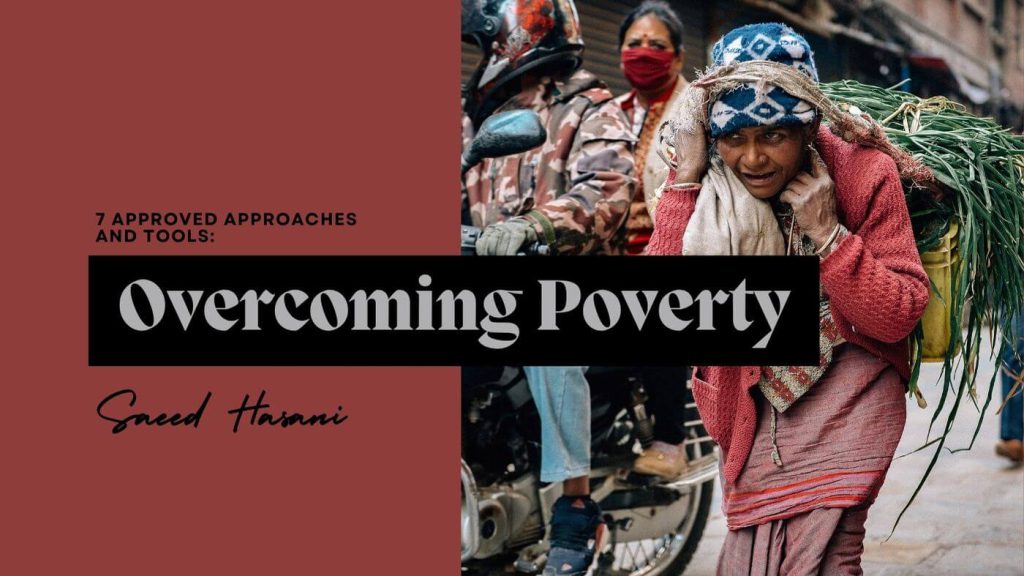
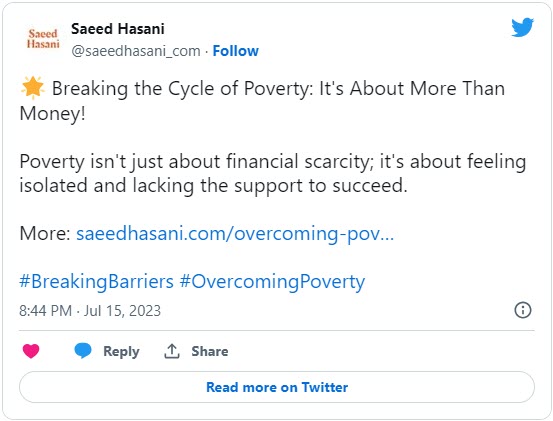
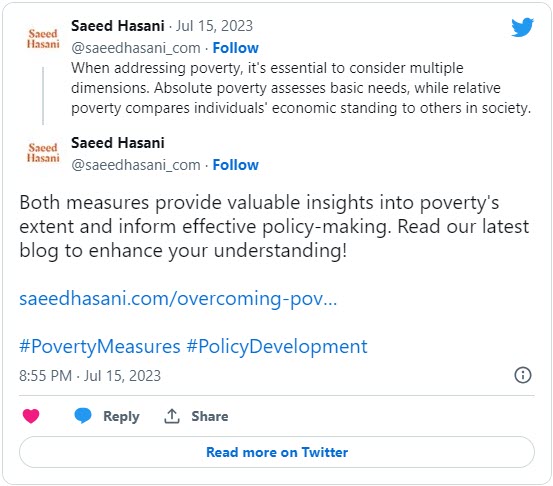
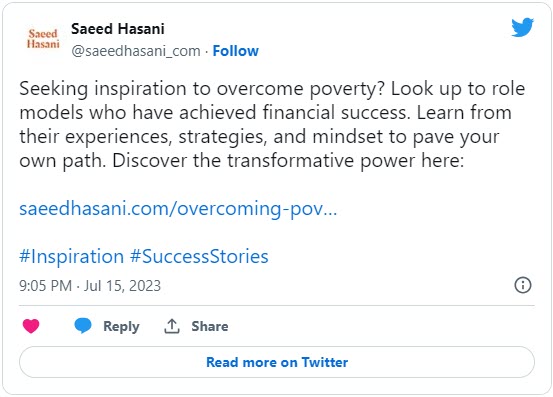




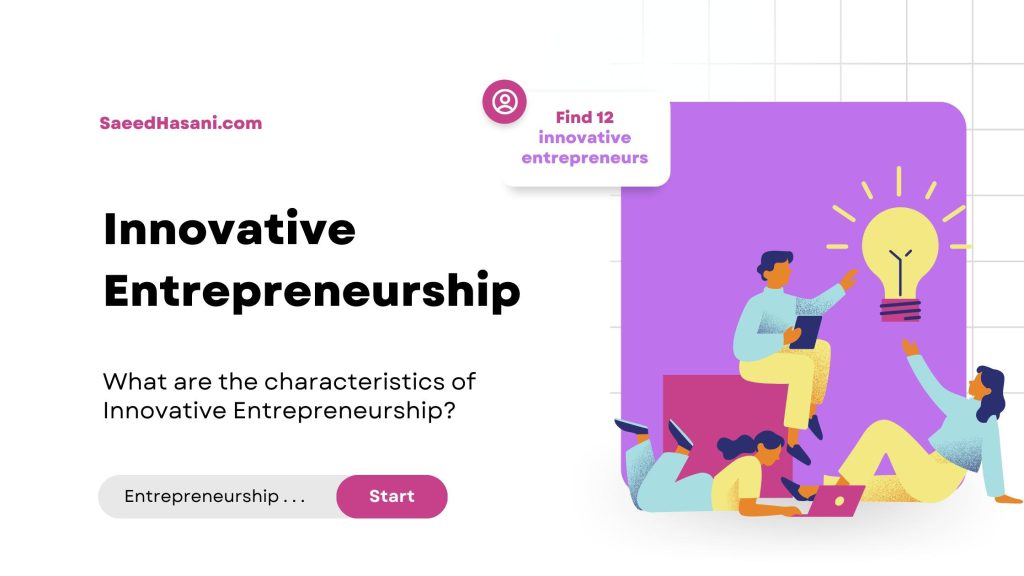
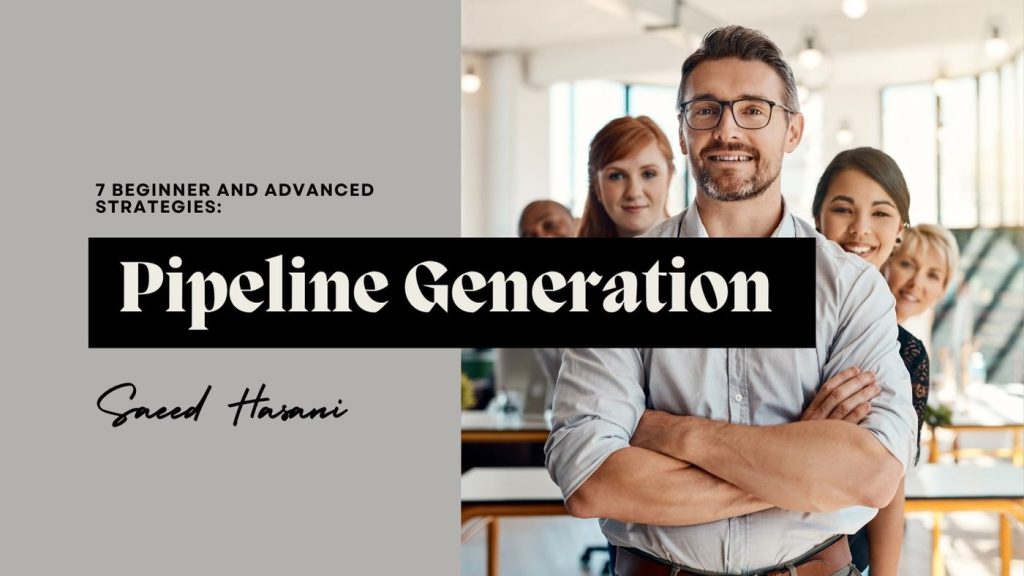

Responses